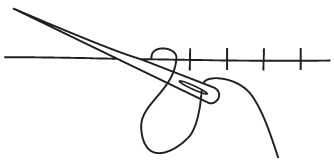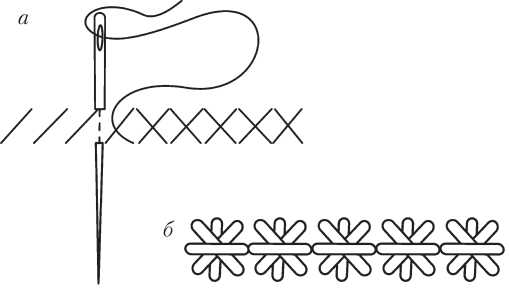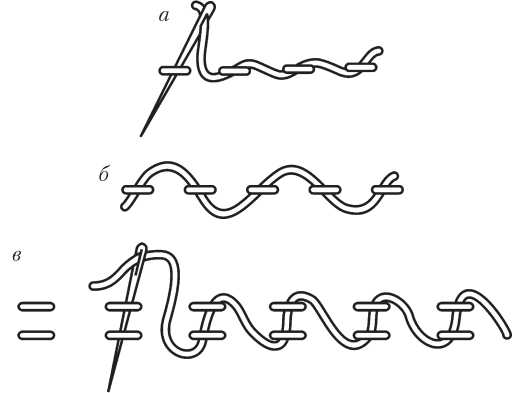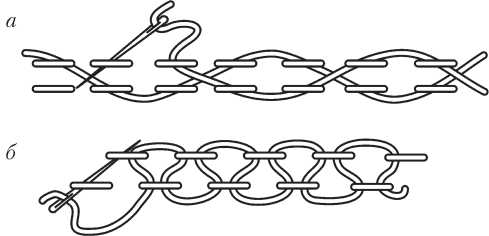Seam "Dotted"
Running threads of different colors and thickness. Thick thread to sew the fabric with thinner thread. Stitches are perpendicular to the thick filament, pressing it to the fabric (Fig. 16).

Seam "Cross"
They embroider on podernuta threads on canvas and on account of threads. It is performed from left to right. Needle with thread, print on the front side in the lower corner on the left side. Make a diagonal stitch from left to right and from bottom to top. Then using the wrong side of the pull the needle with the working thread on the lower line, and run the 2nd diagonal stitch, completing a cross.
If you embroider a number of crosses, it is first necessary to make a number of oblique stitches in one direction with a slope to the right. Then on the return stroke embroider some stitches with a backward slant, which overlap with the first (Fig. 17A).
There is a variety of this seam — "double cross". For embroidery we must first make the usual cross, then the vertical stitch and then horizontal (Fig. 17B).
 Seam "Lace"
Seam "Lace"Performed by threads of different colors. "Lace" embroider the outline of the drawing. This seam performed in 2 doses. First do the stitches of the seam "forward needle" on the circuit pattern. And the stitch length should be 2 times smaller than the distance between them.
In the next phase of work with a needle and thread of a different color wrap around each stitch on the front side, not piercing the fabric (Fig. 18a). Can the second thread is not to pull too hard, the seam turns out much different (Fig. 18b) There is a variety of this seam, when the 2nd thread is wrapped around 2 parallel to the weld (Fig. 18V).

Figure 18. a and B. Seam "lace" and its variants
The Suture Chain
Is the same as the previous seam, the contour of the figure. The needle with the working thread needs to pass through 2 rows moving diagonally (Fig. 19a). There is 1 other version of this type of seam. Parallel stitches should go in a checkerboard pattern, and working the thread also passes through the 2 rows of stitches (Fig. 19b).

Figure 19 a, b. The suture chain and its variation



